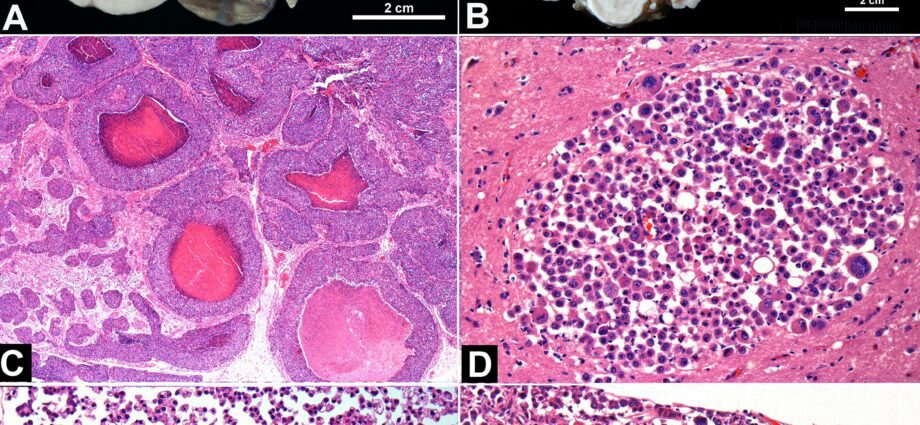Contents
Neoplasia: pulmonary or mammary, what is it?
Neoplasia refers to the pathological formation of new tissue in the body.
What is neoplasia?
Neoplasia is the formation of new tissue as a result of the abnormal and uncontrolled proliferation of cells. It can occur anywhere in the body. The new tissue, called a neoplasm, has a structural organization or even a functioning that differs from the normal tissue that surrounds it.
Neoplasia is synonymous with tumor, but it doesn’t have to be cancer. It can be benign or malignant. Additional examinations are often necessary to find out.
Causes of neoplasia
The causes of neoplasia are multiple and not always known. But there is always the modification of a gene or its expression in a cell. This then becomes unstable and proliferates in an anarchic fashion.
If the neoplasia presents a risk of spreading in the form of metastases, it is called a malignant tumor; otherwise, a benign tumor.
The consequences of neoplasia
Even benign, a neoplasia can have an impact:
- on neighboring structures: When a cyst, nodule, or polyp gets bigger, or when an organ grows, it can clash with its surroundings. Thus, benign prostatic hyperplasia can be caused to compress the urethra and lift the neck of the bladder, thus creating urinary disorders;
- on remote functions: if the neoplasia develops from a glandular cell, it leads to overproduction of hormones. This can trigger a cascade of reactions, including on organs located far from the tumor. We then speak of “paraneoplastic syndromes”.
When the tumor is malignant, there is also the risk of seeing the lesion spreading rapidly, to the detriment of other tissues of the organ, but also of seeing it dispersing throughout the rest of the body, via metastases.
Example of pulmonary neoplasms
Benign tumors represent 5 to 10% of pulmonary neoplasms. They usually do not cause symptoms. But sometimes they develop, even slowly, block a bronchus, which promotes bacterial infections, including pneumonia and bronchitis. They can also cause bloody coughing up (hemoptysis) or the collapse of a lung (atelectasis), due to the decrease in the air entering during inspiration.
Malignant tumors, which give rise to a lung cancer, evolve much faster, can create the same symptoms but more severe. They can invade a large part of the bronchi and cause respiratory failure. Due to the close contact between the lungs and blood vessels, necessary for oxygenation of the blood, they have a higher risk of spreading metastases.
Whether cancerous or not, pulmonary neoplasias can start in the bronchi, but also on the outer part of the lungs. The lesion can then encroach on other structures, in particular nerves, for example causing muscle weakness or loss of balance.
In addition, sometimes the cells of the neoplasm have transformed into glandular cells, producing hormones in a place that does not usually produce them. The tumor then manifests itself by symptoms that are not respiratory. This paraneoplastic syndrome can take several forms, isolated or associated, such as:
- hyperthyroidism, with fluid retention and low sodium content in the blood, consequences of inappropriate secretion of antidiuretic hormone (SIADH), as well as tachycardia, nervousness, unusual sweating and weight loss related to overproduction of natural cortisone (Cushing’s syndrome). If the examinations show a normal thyroid, another cause is sought: it may be a hypersecretion of choriogonadic hormone (hCG) by a lung tumor;
- hypercalcemia, which results in abundant urine (polyuria), signs of dehydration (dry mouth, headaches, confusion, irritability, heart rhythm disturbances) or even abdominal pain, nausea and vomiting. Among the possible explanations, the secretion of parathyroid hormone elsewhere than in the parathyroid gland, for example by a lung tumor;
- hyperglycemia: some lung cancers induce high levels of glucagon, the hormone that causes liver cells to release glucose into the bloodstream;
- acromegaly, that is, an abnormal increase in the size of the feet and hands and a deformation of the face, linked to an overproduction of growth hormones.
These paraneoplastic syndromes, which occur in 10% of cases, can draw attention to the pathology at its onset, thus promoting early diagnosis.
Example of breast neoplasms
Likewise, breast tumors can be benign or malignant. Even small, they can clash with nerve structures or block lymphatic vessels, causing pain or inflammation. If the neoplasia starts in a glandular cell, it can also cause paraneoplastic syndrome. There again, the forms are varied, malignant hypercalcemia being the most frequent. These complications can be the first sign of a tumor.
In men, the mammary glands can also be affected by neoplasia, increase in size and secrete more estrogen. We are talking about gynecomastia. A breast that is pushing (or both) usually leads to a consultation. The excision of the enlarged glands immediately corrects the hyperestrogenia.
What treatments?
Treatment depends on many factors:
- type of tumor;
- location ;
- Stadium ;
- extension ;
- general condition of the patient;
- etc.
When the neoplasia is benign and does not cause symptoms, regular monitoring is often put in place. On the other hand, faced with a malignant tumor, a management is necessary. It may be surgery (tumor removal, removal of all or part of the organ), radiotherapy, chemotherapy, immunotherapy or a combination of several treatments.
When to consult?
If you experience any unusual and bothersome syndrome that persists or gets worse, talk to your doctor.










